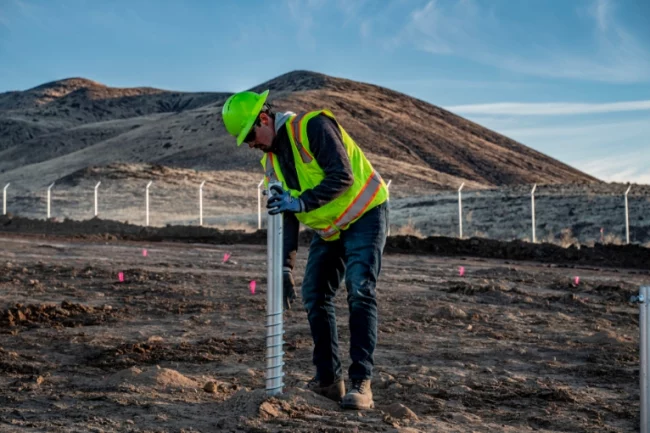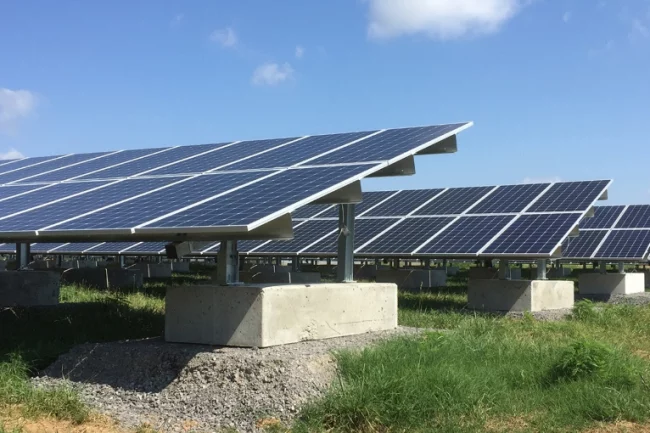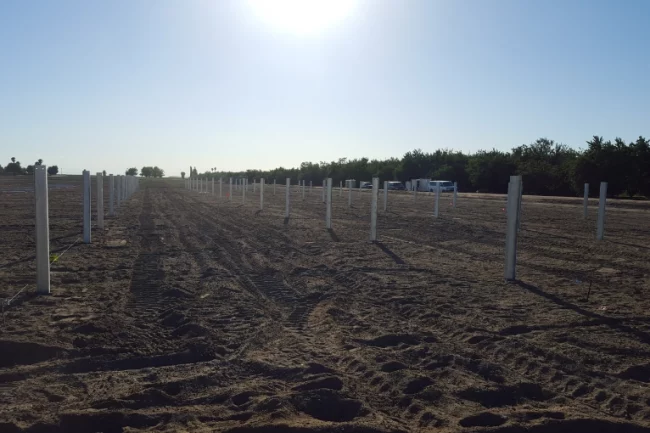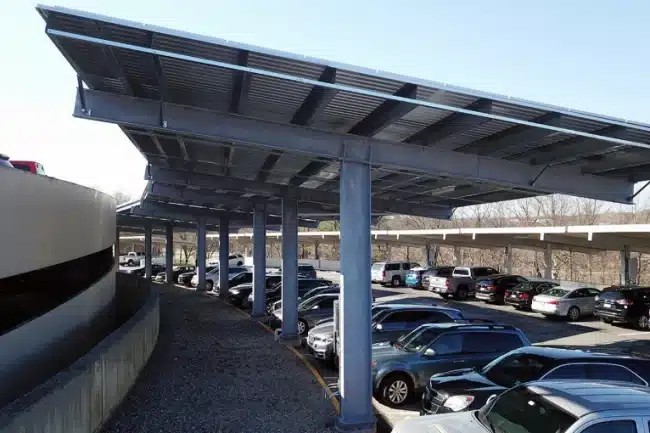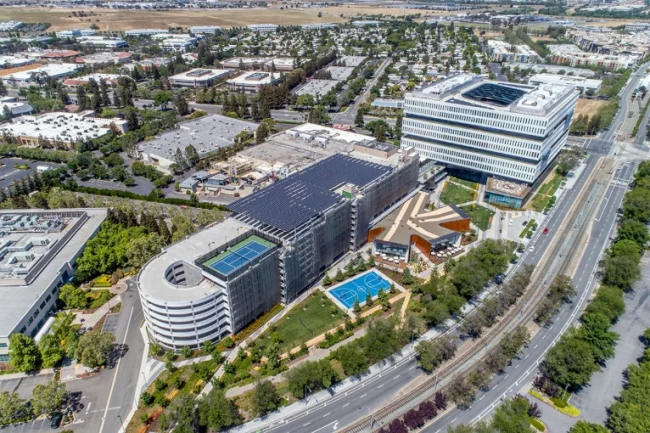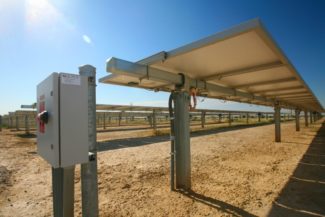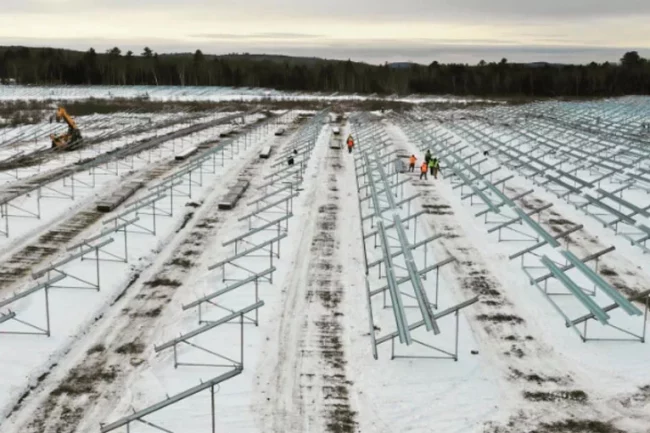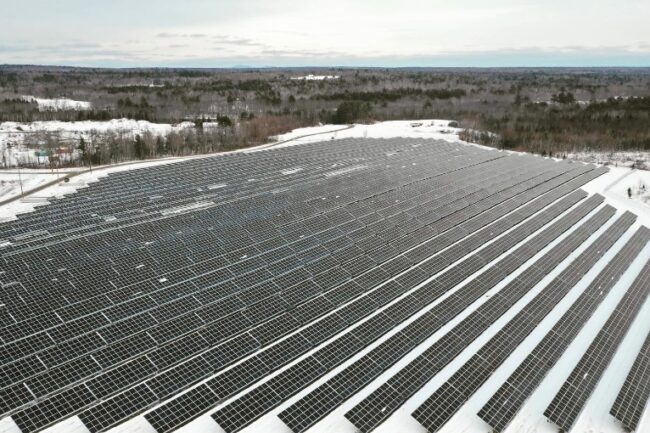Solar wiring that integrates easily in the field can simplify installation, enhance both quality and longevity, and improve overall project efficiency.
All stakeholders enter a commercial solar project with the goal of an on-time, on-budget delivery, but delays and overages are becoming widespread. Impeccable installation execution with an eBOS wire management system holds a key to timely and efficient delivery.
With an increasingly crowded solar market and more competition for solar projects, developers and EPCs can gain a competitive advantage by developing a track record of completed projects with minimal delays or overages. With the cost of a delay at $200,000 per MW, and PV solar installations delayed by an average of 4.4 GW each month, even a brief delay can take a significant toll on a project’s financials, and put profitability and capital management at risk.
While there are numerous external pressures that can delay a project, such as supply chain slowdowns or local ordinance issues, efficient installation is within a developer’s direct control.
The degree of installation success is driven in part by wire solutions. Wiring that integrates easily in the field can simplify installation, enhance both quality and longevity, and improve overall project efficiency. Wire solutions with a balance between customization and pre-fabrication can yield optimal results, including:
- The ability to pre-fabricate custom harnesses and source circuit lengths can significantly shorten installation time in the field.
- Wire stripping and adding connectors in the factory to controlled, manufacturer recommended tolerances will provide better longevity – enhancing a project’s financials in both the short-term, through faster installation, and in the long-term through better performance.
- Prefabricated and customized wire solutions have better consistency and reliability due to factory precision vs. manual fabricated on site.
The true cost of generic wire
While utilizing bulk wire solutions may seem like a fast and easy road to completion, it can slow down a project and cause installation delays. Every project has its own unique system design that requires a specific wire gauge, harness length and combiner box combination customized for each site. When evaluating wiring options consider the risks of using field-fabricated solutions, such as:
- Generic wiring that’s cut and fabricated on site lacks factory-assembled consistency, increasing the potential for connection issues and safety risks.
- Inconsistent tolerances and inefficient wire planning can necessitate procuring larger amounts of wire, creating budget creep and waste.
- Installing in the field requires more hours of skilled labor and entails on-site problem-solving instead of proactive planning ahead. This makes time and cost budgeting more unpredictable.
The bottom line – wiring options can make or break a project’s timeline and the quality of installation.
Assessing wire solution options
EPCs and developers that are assessing eBOS partners and wire solutions can benefit from these considerations:
- Assembly: Is assembly in-house, or managed via-subcontractors? In-house assembly allows a partner to have more control over quality and lead times.
- Design: Custom designed harness solutions can reduce the amount of wire required and therefore reduce overall eBOS cost.
- Plug-and-play: Does installation require manual cutting and problem-solving on-site, or can the solution be prefabricated for faster downstream installation and reduced labor costs?
- Project-specific solutions: What’s the degree of project customization? Problem-solving upfront and estimators who design tailor-made solutions will smooth installation and reduce risks of delays and budget overages.
- PV project lifecycle knowledge: Installation is only one piece of a much larger project with a much longer timeline. Does the wiring solution partner have a track record of success in complex PV projects, and understand the solar project lifecycle from upstream to downstream?

Wiring solutions can lay a foundation for ongoing success and an industry-leading reputation for timely, on-budget, and high-quality projects. As we move toward a clean energy future, competition among solar stakeholders is likely to increase, and developers and EPCs known for impeccable installation will stand out from the rest.
Case study: Cranberry fields forever
The Scenario: Installation execution was put to the test in Southern Massachusetts at a local cranberry wetland farm. Also known as cranberry bogs, these wetlands were designated as dual-purpose land (i.e., agrivoltaics). A leading solar developer was engaged to install 9-MW solar panels with 36-MWh storage over the fully-functioning bogs.
The Mission-Critical Task: Precision and accuracy were imperative, as installing solar panels over 150-year-old cranberry vines allowed zero room for error. The process required that arrays were high enough to prevent any damage to the cranberry crops below, while allowing for farming activities to take place without disruption. The complexities of this project simply could not be met with off-the-shelf-wire solutions.
The Challenge: A $53 million project set to power 1,800 homes was at stake. On top of that, there was a tight six-week delivery window, much shorter than a typical turnaround timeline. To meet the project requirements by the deadline:
- The solar arrays had to be mounted on 25 to 40-foot-long wooden,vwet terrain-resistant utility poles.
- The poles had to be driven 15 to 30 feet into the ground, keeping the solar modules at least 10 feet above the cranberry bogs. At this height, significantly more wire is required than the average solar project.
- The wiring solution needed to minimize long and heavy in-field installation activities to keep the cranberry bogs fully functioning.
The Solution: To ensure that the arrays would have solid foundations, durable racking structures, and be placed at an atypical height to minimize impact on crop growth, the deployed wiring solution had to be truly customized to every condition and variable: height, placement, quantity, human activity, and project timelines.
To meet the tight turnaround, the wiring was coordinated alongside the racking and module installations and the wiring was factory-assembled to ensure quick field installation. A total of 1,384 source circuit conductors (half positive, half negative) were cut to length and labeled in the factory with MC4 connectors installed on the panel end. It was blunt cut on the opposite end for field connection to combiners. The wiring was shipped on spools to the site, and the end-to-end connectivity of the wiring solution allowed for quick plug-and-play in the field.
The Outcome: The installation proceeded smoothly and efficiently, and the project was completed on time and on budget. Throughout the project, the cranberry bogs were fully operational and yielded a bountiful harvest.

Joe Parzych
Joe Parzych is eBOS product manager at Terrasmart. He brings over 15 years of product management experience to Terrasmart, focusing on wire management, product development, and production improvements. Terrasmart’s integrated eBOS solutions have delivered 23.5M feet of wire for solar projects across the country.

